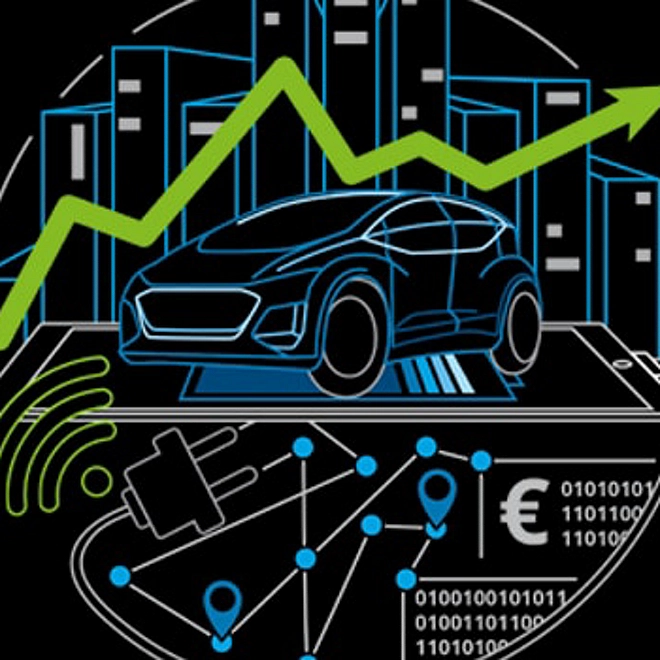Last mile delivery landscape in the transportation sector
The Transportation ecosystem – more dynamic than ever
Last mile delivery is a fast maturing, yet challenging component of the logistics and transportation space. Last mile delivery accounts for as much as 30-35% of the total delivery cost, meaning better last mile support in transportation management and storage becomes critical. The increased importance of last mile delivery has become evident across all modes of transportation – rail, road, air, and water.
Long-standing freight shippers are implementing or upgrading technology to enhance last mile support. The focus is on improving reliability, reducing waste, enhancing customer experience, and increasing overall competitiveness of the transport ecosystem. During COVID-19, multiple shippers and carriers incorporated digital platforms and transportation intelligence systems to enhance last mile experience by achieving:
- Real-time visibility into freight status to improve end-to-end tracking and client connect
- Cost-effectiveness suggestions to provide carriers and clients with better prices
- Request assessments to quickly help clients to understand their last mile delivery requirements better
- Comingled retail routes to save time and ensure timely delivery at the client’s location
The future is also going to be impacted by the evolving regulatory landscape to govern use of advanced technology-powered solutions such as autonomous mobility and automated parcel lockers, as well as sustainability-targeted solutions such as use of low-emission/electric modes.
Key sector trends
With rise in global shipment through omnichannel modes and digitally advanced supply chains, modern last mile strategies are becoming more crucial to customers and shippers. Service providers are observing changes related to process standardization and integration, preferred mode of delivery, and buying preferences of customers, which is influencing new investment priorities.
Holistic policy approach to gain traction globally – sustainable last mile transportation
- Acceleration in policy building focused on developing integrated set of regulations/standards which can promote fuel economy, reduce trip frequency, and increase use of alternate fuels/modes.
New technology alliances and investments shaping last mile in transportation sector
- Investment in advanced technology solutions powered by AI, IoT, big data, blockchain is on the rise, with start-ups going beyond drones and droids. For instance, Data Roots Labs report featured, Cargofy1 (an US-based AI-powered logistics service provider (startup)) as one of the leading startups bringing AI to logistics industry2 with focus on prioritizing better engagement and connectivity in freight transportation.
Cross-border last mile delivery is emerging as an opportunity with huge potential
- Re-enforcement of supply-chain networks that support cross-border shipping and delivery is being explored by shippers and carriers globally. Europe has emerged as a region with high potential considering cross-border orders accounted for ~26%3 of e-commerce sales in Western Europe in 2019. In line with the trend, a leading logistics company recently expanded its European last mile operations4 by establishing hubs across the UK, the Netherlands, Ireland, and Spain.
Experimentation in last mile freight transportation mode preferences – on track a priority
- Initiatives and pilot projects have been launched to evaluate the benefits of leveraging rail transport for non-bulk freight. For instance, a pilot project (2020) in India, focused on utilizing luggage compartments of suburban trains during non-peak hours for last mile delivery support. Pick-up/delivery kiosks established at the station helped to reduce freight transit time, rate of last mile delivery failures, parcel thefts, and overall logistics cost.
Region in focus – Growth traction by geographic region

While focuses differ, investments in the last mile startup ecosystem have been initiated across all geographies. Currently, the US and Asia Pacific (APAC) are the most mature, based on investment thresholds and volume of last mile startups. Considering the startup investment trends, autonomous fleet adoption is relatively more mature in the US, whereas Europe has a stronger green fleet.
Regulatory landscape and relevant policies
Today’s last mile regulatory landscape is highly heterogenous. In certain instances, the absence of legal boundary conditions or country-wide policy standardization, have resulted in increased challenges for last mile services, particularly in transportation. A WEF report5 (2020) cited autonomous mobility regulation inconsistencies in the US as an example of discordant regulatory ecosystem:
In the US, 29 states have passed certain laws for autonomous vehicles, and there is a clear risk of proliferation of different, occasionally conflicting regulations. While in California, the law requires that pilot data related to vehicle and robot testing is shared with the state government, other states such as Texas and Arizona have a less explicit regulatory framework that, in the end, creates compliance challenges, reduces street safety and prevents technology players from developing scalable, standardized offerings.
Technology and data-powered innovations such as autonomous driving and droid delivery could mature over the next 5 to 10 years and benefit last mile functions related to freight transportation and warehousing. With this, the risk of cyber and data attacks is simultaneously likely to increase. Thus, governments are prioritizing updates to regulatory frameworks governing cyber-security, street-safety, and offering-standardization. In addition to technology, policy makers are targeting the climate impact of last mile services in the transportation sector.
Regulations impacting last mile service providers include:
Potential future regulations:
Future regulations related to last mile are likely to be focused on transformative infrastructure, standardization and regulation oversight issues, and ease of adoption of autonomous technologies.
For example,
- Potential focus: It is being speculated that under Biden’s administration, the Federal Motor Carrier Safety Administration (FMCSA) will likely broaden their regulatory lens10 from the historic focus on heavier vehicles. While risk is greater in heavier vehicles, it was observed that many vehicles are designed to just remain just under the regulated threshold. Since use of smaller vans/trucks (which are federally regulated when carrying passengers but not when carrying cargo) for last mile transportation is becoming common, adding regulations focused on safety to those lighter vehicles becomes crucial. New regulations would primarily impact parcel carriers and those that have large fleets of vans and smaller trucks, as well as the new entrants to the last-mile delivery market.
- Potential focus: Investment in federal, digitalized, and modern roadways (part of Biden’s “Build Back Better” plan) is another priority, which may attract attention of regulators, considering the likelihood of transportation infrastructure improvements accelerating last mile operations, and rise in last mile operations in a city, resulting in increased road safety risk at local level.
- Potential focus: If the push by Biden’s government towards increasing minimum wage is successful, it may lead to multiple retail and labor policy reforms and impact the free-/economic-delivery offers by last mile solution providers and retailers. Considering the speculations around the 2021 minimum wage act, some big-box retailers have already increased the wage (ranging between USD11-15 per hour) as the scale of operation of these players make higher wage cost absorption easier. Another likely scenario is that independent retailers and smaller players (particularly those who had started providing small-scale/ local last mile solutions/support) might not be able to absorb the wage inflation and pass on the costs to their customers or be forced to eliminate the last mile support, resulting in a potential power imbalance within the last mile delivery space.
Conclusion
The last mile delivery landscape in transportation is evolving significantly, particularly the adoption of autonomous and zero-emission delivery modes. A shift in preferred modes of last mile delivery (for both bulk and non-bulk freight) is also likely to take place, with an emphasis on rail transport to enhance cost-efficiency of last mile delivery function.
From an efficient execution perspective, policy makers continue to prioritize efforts to standardize processes and improve adoption of security, sustainability, and technology regulations, while players continue to invest in technology and compliance initiatives.
Sources:
- https://cargofy.com/
- https://cargofy.com/blog/how-can-ai-transform-the-trucking-industry
- https://www.supplychainbrain.com/articles/31267-new-challenges-in-cross-border-last-mile-await-european-shippers
- https://www.supplychaindigital.com/sustainability/xpo-expands-last-mile-network-across-europe
- http://www3.weforum.org/docs/WEF_Future_of_the_last_mile_ecosystem.pdf
- https://european-accreditation.org/new-regulation-eu-2020-1056-on-electronic-freight-transport-information-has-been-published/
- https://www.epa.gov/regulations-emissions-vehicles-and-engines/regulations-greenhouse-gas-emissions-commercial-trucks
- https://www.smartcitiesdive.com/news/usdot-unveils-av-40-report/570070/
- https://www.dnv.com/news/cyber-security-to-be-covered-in-sms-from-1-january-2021-are-you-prepared--176620#:~:text=The%20IMO%20has%20adopted%20a,first%20annual%20verification%20of%20their
- https://www.hklaw.com/en/insights/publications/2021/01/what-will-the-fmcsa-prioritize-in-biden-administration


